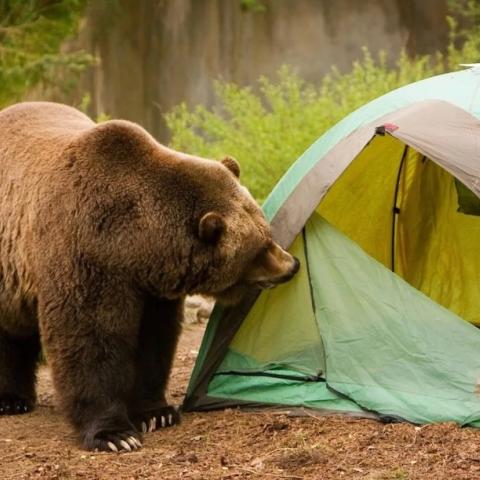With a 23-15 party line vote the House Natural Resources Committee has approved legislation that would force the National Park Service to open up more than 400 miles of streams to paddlers in Yellowstone and Grand Teton national parks, though whether the full House and Senate will do the same remains to be seen.
During committee action Thursday the Republican-dominated committee accepted Rep. Cynthia Lummis' Yellowstone and Grand Teton Paddling Protection Act along with an amendment she tacked on that would require the Park Service, at a minimum, to allow paddlers on 50 streams that run through the two parks.
You can read more details about the legislation here.
In a prepared statement, National Parks Conservation Association officials criticized the committee's action.
“The National Parks Conservation Association is disappointed that the House Committee on Natural Resources today chose to advance legislation that stands to have far-reaching, negative impacts on Grand Teton and Yellowstone national parks, two of our country’s crown jewels. The Yellowstone and Grand Teton Paddling Act would force the National Park Service to open up 450 miles of waterways in these parks without study or public comment," said Stephanie Adams, the park advocacy group's Yellowstone program manager. "As written, this legislation could aid the spread of invasive aquatic species, damage native trout habitat, and serve to disrupt prime habitat for endangered grizzly bears.
“The legislation would also require the National Park Service to allocate already sparse funds and time from other priority programs to study the impacts of paddling on up to 6,500 additional miles of rivers and streams---nearly two and a half times the length of the entire Mississippi River. Current cost estimates for a study of this scope is in the millions.
“NPCA is supportive of boating and paddling opportunities within our national parks – it’s a great way to enjoy them. Yellowstone National Park currently provides boating access to 163 of its 168 lakes. And in Grand Teton National Park, 60,000 visitors each year float the 26-mile stretch of the Snake River within park boundaries. We hope that Congress will not move this problematic legislation forward.”
Between holidays, scheduled recesses for both Senate and House, and major issues such as the nation's debt limit and budget yet to be resolved, whether this legislation will gain further attention this session is questionable.




 Support Essential Coverage of Essential Places
Support Essential Coverage of Essential Places







Comments
NPT - I think you're misrepresenting the facts on this issue. First of all, the use of the word "force" is not correct. "Allow" would be the more proper term.
According to a PR by Rep Lummis: "The NPS will retain full management over paddling in the parks and will retain discretion on whether to go through a rulemaking to open additional waterways as it sees fit. Backcountry lake paddling management has proven that the NPS is up to the task of managing paddling on waterways while protecting natural resources."
This key piece of information is missing from your slanted reporting.
Moreover, if indeed the NPCA is correct in that the bill will truly have a significant negative impact on wildlife and other natural resources, then why aren't paddling sports an issue in other parks - or for that matter, existing lakes and rivers within YNP and GTNP where paddling sports are currently allowed?
Robert, I think the "at a minimum" language of her amendement (http://naturalresources.house.gov/uploadedfiles/hr_974_lummis_025.pdf) would take away the NPS discretion in those designated waters.
The language in Rep. Lummis' amendment to her bill specifically uses "shall," and not "may." As such, it directs the Park Service to open up the river/stream segments she specifies in her amendment (if Congress as a whole passes her bill and the president does not veto it.) As EC notes, it removes NPS discretion in the matter.
We'd be interested in seeing the "PR by Lummis." Her spokesman, Joe Spiering, said last Wednesday morning that he would answer our questions about why the congresswoman chose the language she did, and then failed to follow up. At least so far.
As for other parks, Yellowstone has some unique resources/settings that can't be found in other parks in the Lower 48.